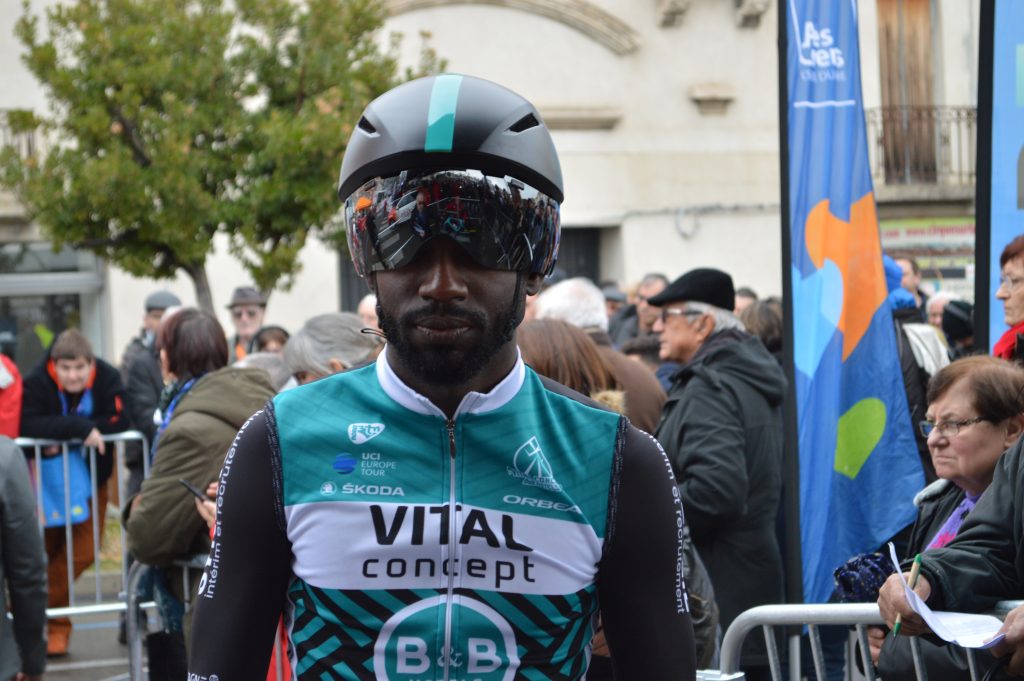Why Are People of Color So Scarce in Pro Cycling?
On May 17, Eritrean cyclist Biniam Girmay won stage 10 of the Giro d’Italia, becoming the first Black African to win a stage at a cycling Grand Tour. While there are quite a few Africans in pro-cycling, many are white, just like most pro-riders. And while there is a variety of countries and ethnicities represented in the European-dominated sport, people of color are still few and far between.
Riders of color in pro cycling’s history
In cycling, a Grand Tour is a three-week stage race. The Tour de France is the biggest and most well-known, but there is also the Giro d’Italia and Vuelta a España. They started in 1903, 1909, and 1935, respectively.
While the first African to race the Tour de France was Ali Neffati of Tunisia in 1913, Black Africans have since been sparse in pro cycling’s history. In 2012, Daniel Teklehaimanot of Eritrea became the first Black African to race the Vuelta a España. In the 2015 Tour de France, he became the first Black African to wear the King of the Mountains jersey, an indicator of the race’s best rider on mountain stages. In 2020, French cyclist Kévin Reza was the only Black rider to race the Tour de France.
Middle Eastern/North African (MENA) and Asian cyclists are also extremely underrepresented. In 1950, a team of Algerians and Moroccans raced the Tour de France and claimed two stage wins. Ji Cheng was the first Chinese rider to start each Grand Tour: the Vuelta a España in 2012, Giro d’Italia in 2013, and Tour de France in 2014.
While still underrepresented, Latino riders, specifically Colombian riders, make up the largest minority group in pro-cycling. Nairo Quintana, the first Latin American to win the Giro d’Italia with his 2014 victory, is part of Colombia’s indigenous Muisca population.

How many pro-cyclists of color are there?
In 2020, fewer than ten percent of the 556 male WorldTour riders (the highest level in cycling) were not white. About half of this ten percent were Colombian, and less than one percent were black. This year, only about seven percent of the 538 male WorldTour riders are not white.
It is important to distinguish between Africans and Black Africans when accounting for the people of color in cycling. Many African riders are white: Chris Froome, who was born in Kenya and raised in South Africa, and won seven Grand Tours, is white and rides for Great Britain due to his heritage. Of the 18 male South African riders on WorldTour and Continental teams this year, only two are Black, meaning 89% of the South African riders are white. This composition is largely disproportionate when compared to South Africa’s population, which is about 80% Black and nine percent white.
Why are cyclists of color being hindered?
The cost of bicycle equipment and maintenance limits access to the sport for many. In many parts of Africa, the Middle East, and Central Asia, bike ownership is only about 20%. However, in some lower socioeconomic countries, such as Burkina Faso, cycling is still popular, and bike ownership percentages reach 80%. Many countries with a high percentage of bike ownership, such as Brazil, China, and Uruguay, still do not have cyclists represented at the WorldTour level.
Cycling training is more challenging in some parts of the world. Access to paved roads may be limited due to a lack of infrastructure or security, which is more common in lower socioeconomic countries. Weather can also limit training; extreme heat (such as in Africa or parts of Asia) or high winds and sandstorms (such as in the Middle East) are more prevalent in regions underrepresented in cycling.
Even still, cyclists from these areas ride and race at the local or national level. While there may be fewer opportunities for them to ride, they still exist and can compete at higher levels. Unfortunately, they are often just not given a chance. European teams and cycling culture underestimate their professionalism and skills because of their background and countries of origin.

Even within Europe, though, there are many cyclists of color. The United States is a diverse country, yet all 13 of its male WorldTour riders this year are white. Cyclists of color are less likely to get opportunities due to prejudices and the general lack of emphasis on diversity. This issue goes all the way to the top: across the boards of USA Cycling, British Cycling, and the UCI (International Cycling Union, in English), there are less than ten people of color, none of whom are Black.
Diversity Initiatives
Some teams have noticed these issues and are more focused on promoting diversity. Former WorldTour team NTT and Continental team Kenyan Riders-Safaricom made an explicit effort to develop African riders, but both teams have since disbanded. In 2021, USA Cycling launched an HBCU and TCU program to help increase access to Black and indigenous college students.





